A seal’s survival guide
Co-author: Alta De Vos
I have a big problem: I am hungry.
So go out and grab something to eat. What’s the big deal?
Well, I’m a Cape fur seal and, for starters, my meal is more than 60 kilometres away. But the real cruncher is that I have to run the gauntlet of very big and hungry sharks to get to it. What do I do?
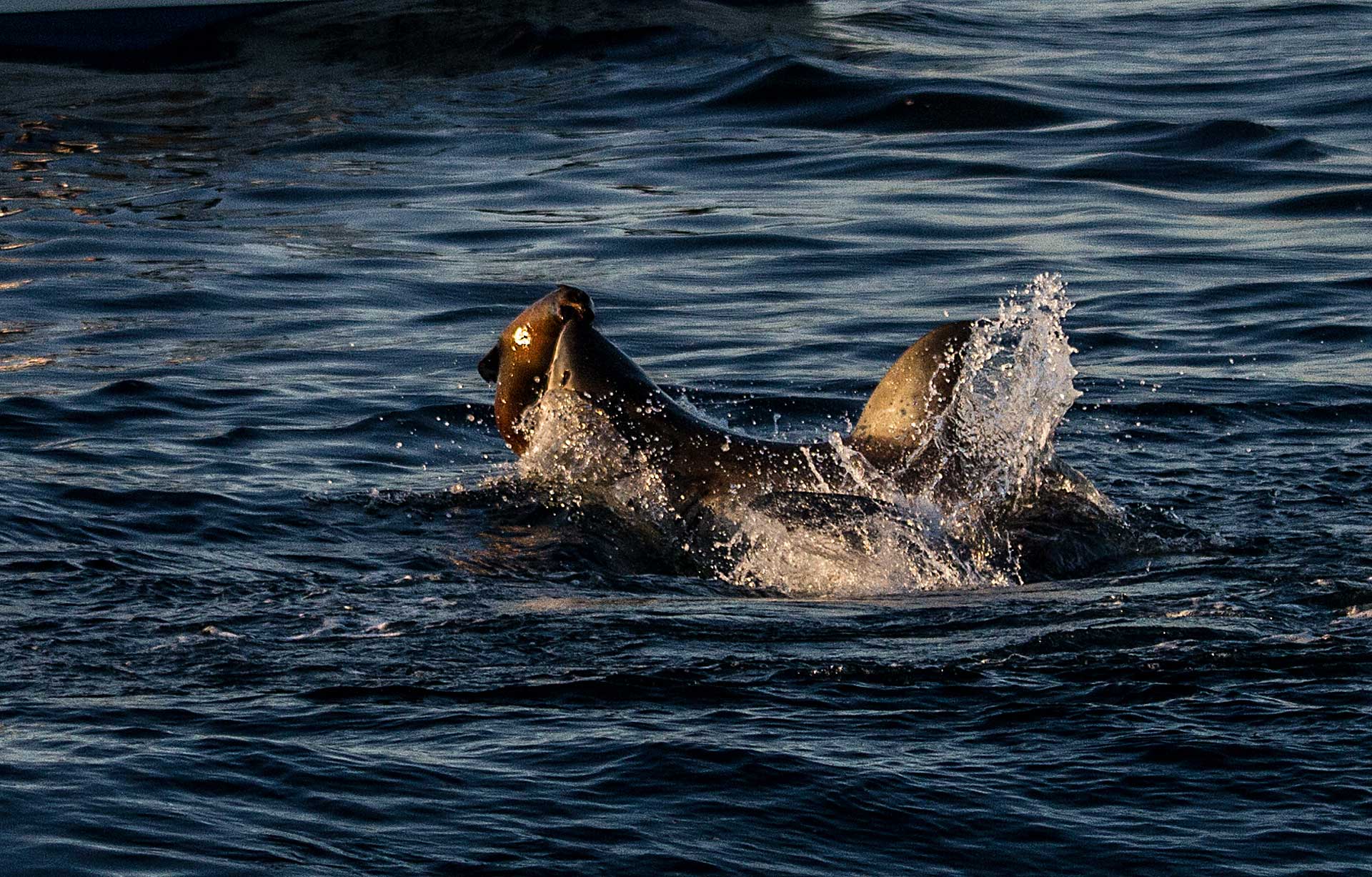
Seal-shark interaction. Photo © Brocq Maxey| Shark Explorers
A lot of our research at Seal Island in False Bay, South Africa, has focused on the shark side of the predator–prey relationship. We know that every year at the start of winter, white sharks show up in large numbers to prey on Cape fur seals (here). And we know that more than 80% of the attacks are on seal pups and most of them take place at sunrise, within 400 metres of the south side of the island.
We also know that as apex predators, white sharks are expected to play a key role in the ocean’s ecosystem structure, functioning and resilience. Generally speaking, they do this in two very important, but different ways: firstly, through active predation they can reduce prey densities; and secondly, through the threat of predation they can influence the behaviour of their prey.
So, what impact are the white sharks having on Cape fur seals at Seal Island?
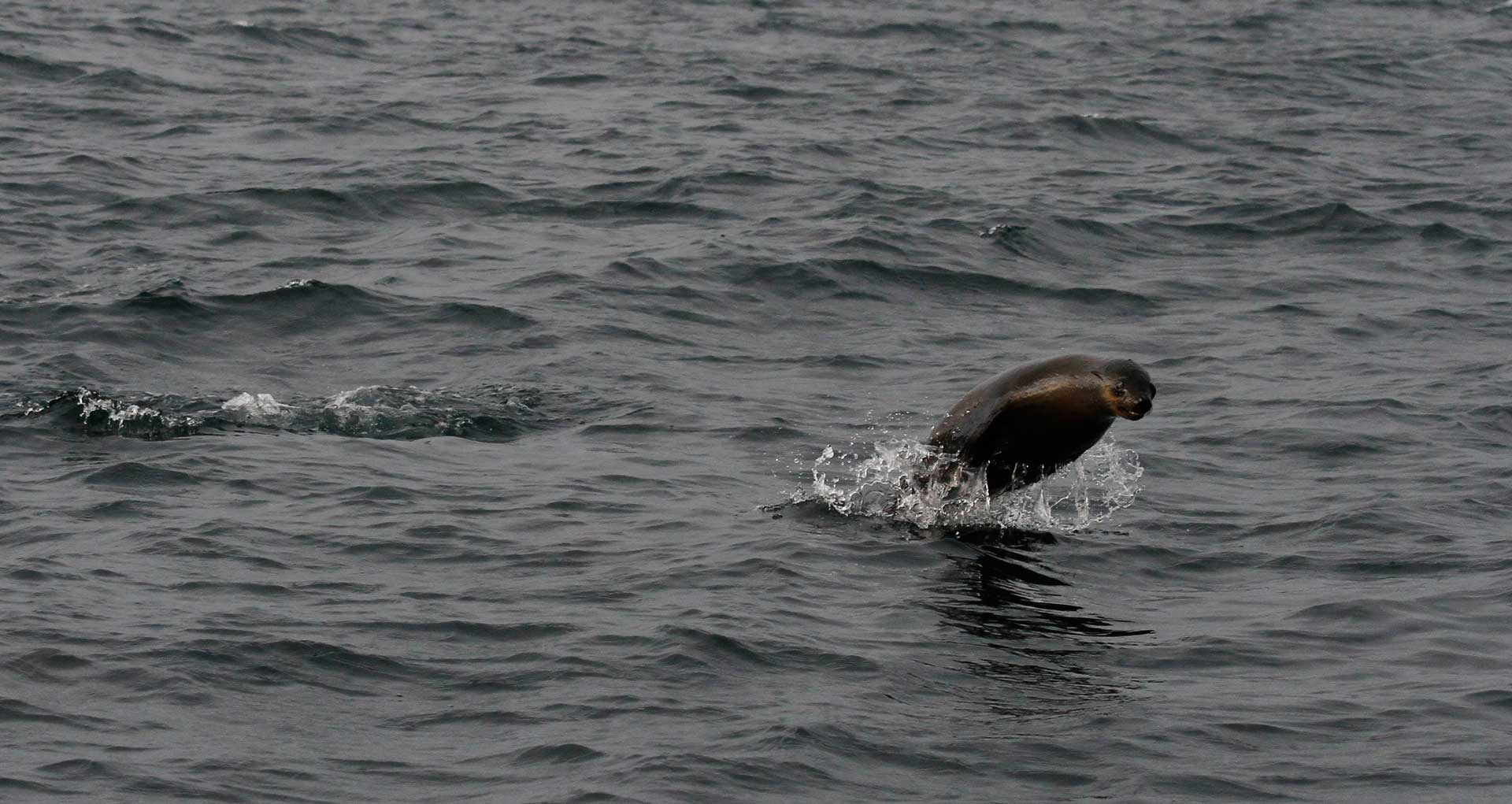
A lone seal. Photo © Alison Kock | Shark Spotters
Our research suggests that even though the highest predation rate on seals observed anywhere in the world is recorded at Seal Island (up to 36 in a single day), predation is unlikely to be the primary reason for seal density being controlled here. Because space is limited, hundreds to thousands of seal pups are washed off the island every year and they drown because they are not good swimmers when they are born. In fact, there has been little change in the size of the seal population over the past 60 years.
We have, however, identified another very important impact that white sharks have on seals. We studied two populations: the one at Seal Island, where there is a high white shark presence and associated risk of being attacked, and one at Egg Island, a small breeding colony on the west coast of South Africa with no notable predation risk from white sharks. To understand how white sharks influence seals, we tagged and tracked seals at both islands and observed the differences in behaviour between them.
Key findings
One of the most interesting discoveries was the change in behaviour of seal pups when they were exposed to white sharks. Sharks arrive at the island just as the young-of-the-year start leaving on their first ‘practice’ foraging trips. The pups are pretty naive at this point, but our research results suggest that they wise up pretty quickly. At Seal Island, tagged pups initially left and returned at all hours of the day. By the end of the high-risk season, however, they completely avoided leaving from and returning to the island at the most perilous time, the hours after sunrise. At Egg Island, where there was no noticeable predation risk, no such temporal shift was evident. Thus, it seems that exposure to predators is a primary driver of behaviour change.
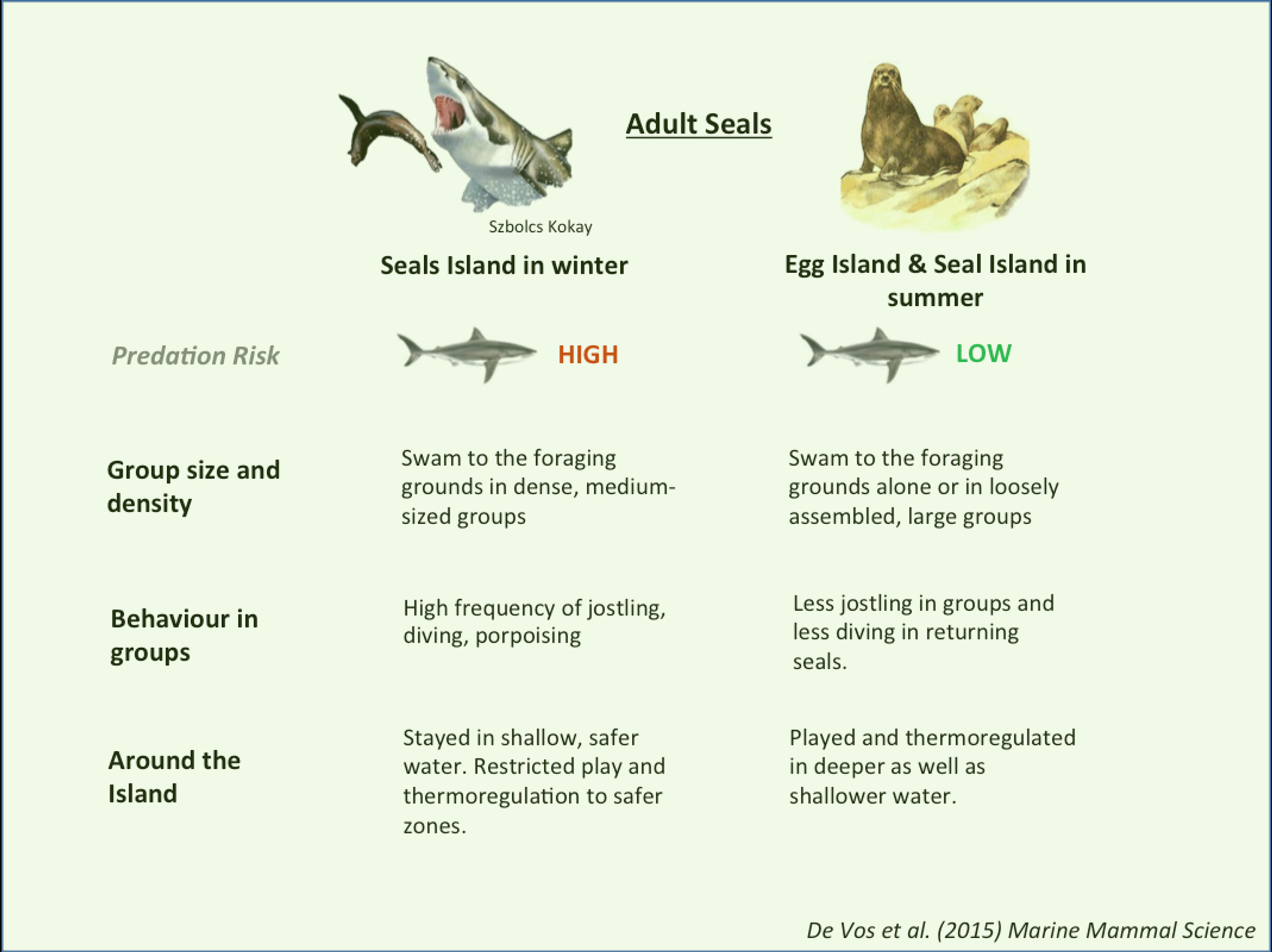
We also found that sharks had a significant influence on the temporal behaviour of adult Cape fur seals at Seal Island.
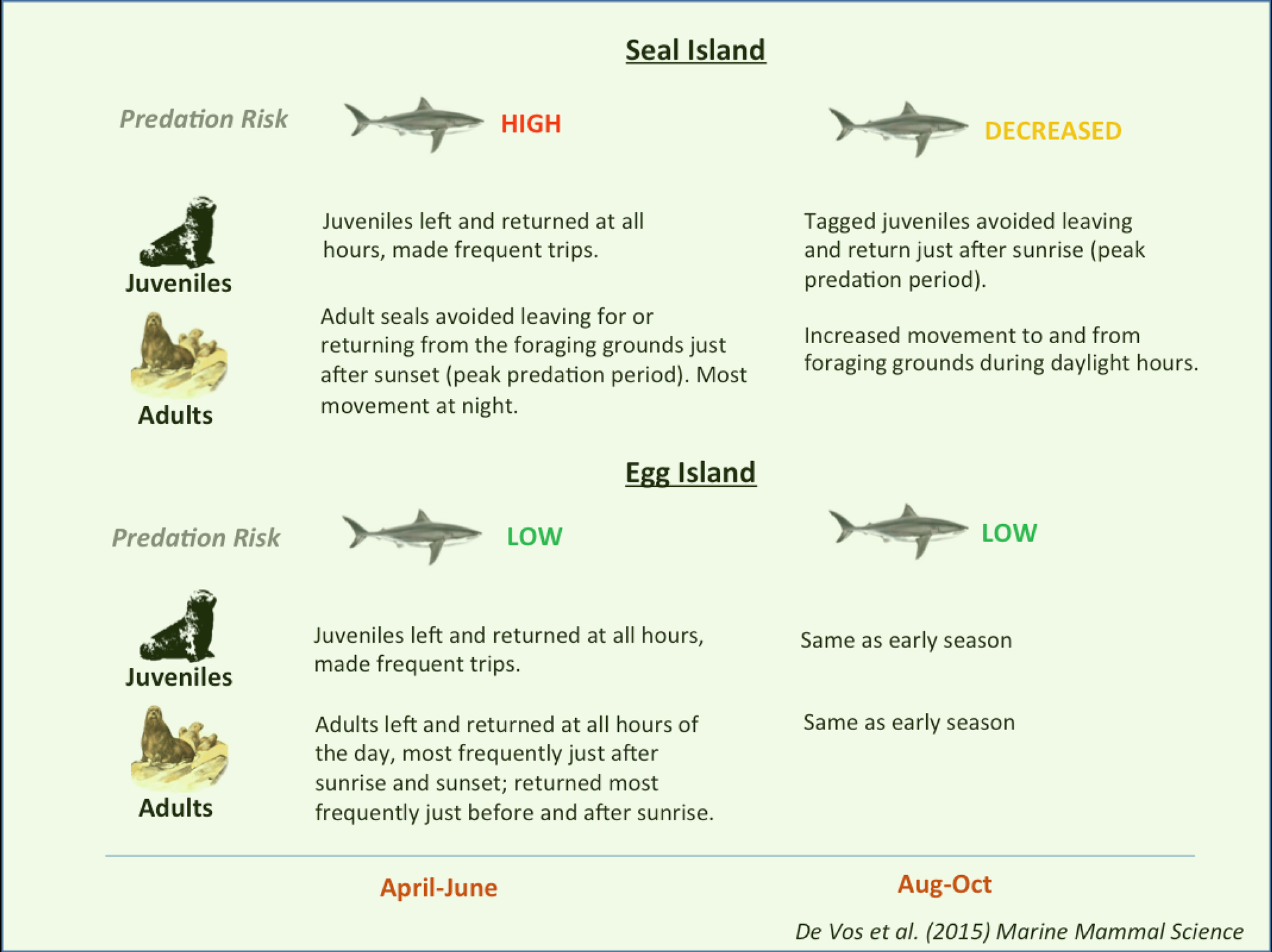
Additionally, sharks impacted the spatial behaviour of adult and juvenile Cape fur seals at Seal Island.
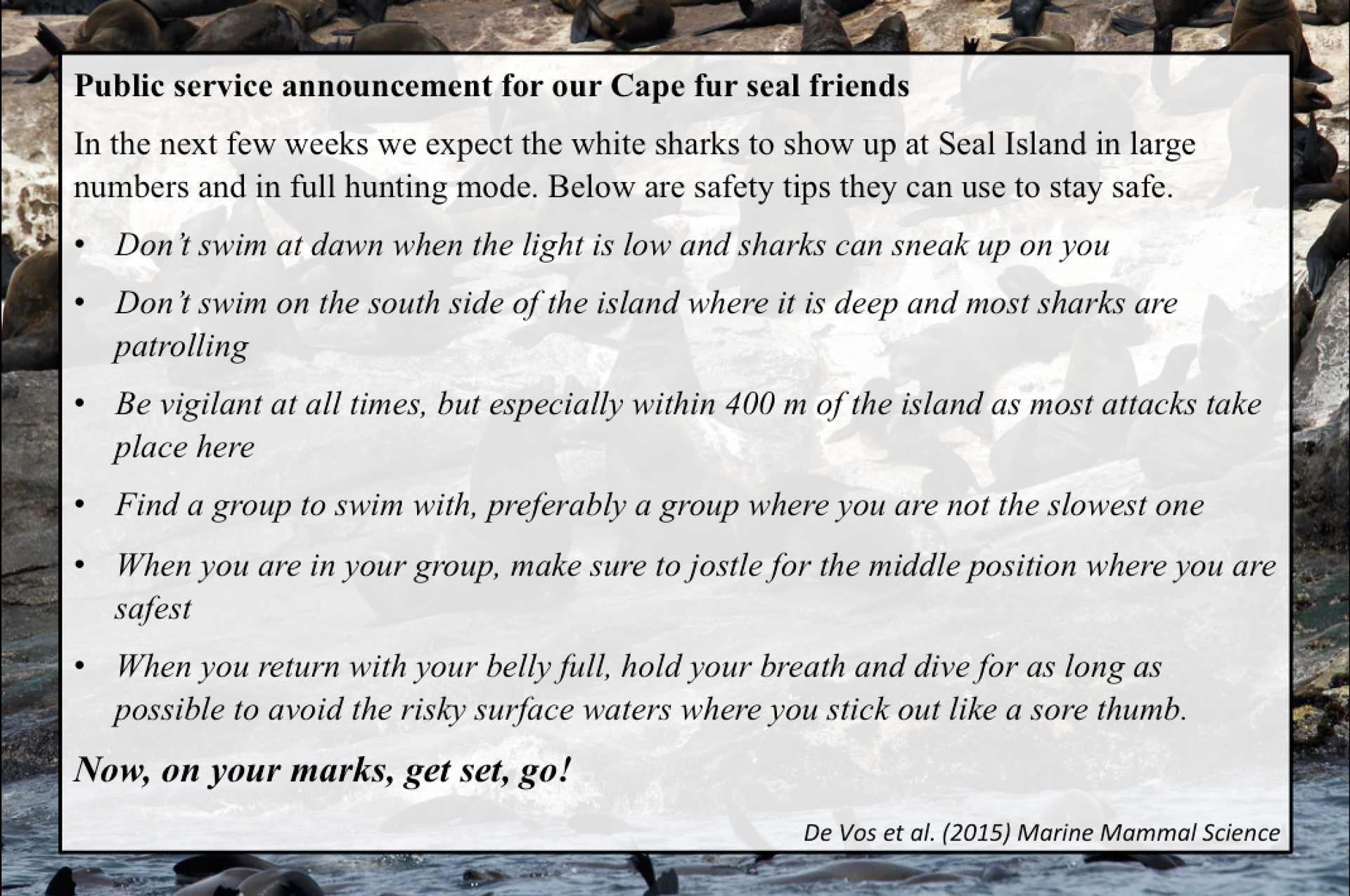
Our research highlights the important impact that white sharks have on seal behaviour, which could have knock-on effects through the food web. Future work will try to determine how white sharks influence other species in False Bay.
References
De Vos A, O’Riain MJ, Meÿer MA, Kotze PGH, Kock AA. 2015. Behavior of Cape fur seals (Arctocephalus pusillus pusillus) in response to spatial variation in white shark (Carcharodon carcharias) predation risk. Marine Mammal Science. 31(3): 1234–1251.
De Vos A, O’Riain MJ, Meÿer MA, Kotze PGH Kock AA. 2015. Behavior of Cape fur seals (Arctocephalus pusillus pusillus) in relation to temporal variation in predation risk by white sharks (Carcharodon carcharias) at a seal rookery in False Bay, South Africa. Marine Mammal Science. 31(3): 1118–1131.
